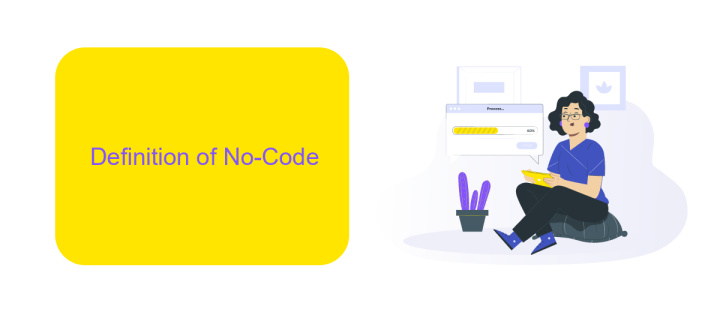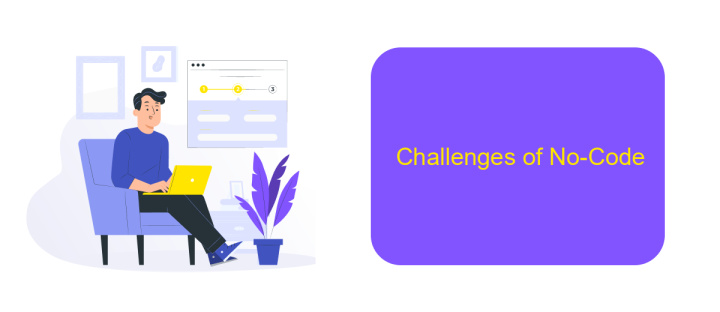MIT No-Code
The Massachusetts Institute of Technology (MIT) has recently launched an innovative No-Code initiative, aimed at empowering individuals with little to no programming experience to create complex software applications. By leveraging intuitive drag-and-drop interfaces and pre-built modules, this initiative democratizes technology, making it accessible to a broader audience and fostering a new wave of digital creativity and problem-solving.
Introduction
MIT No-Code is revolutionizing the way we approach software development by enabling individuals without programming skills to create sophisticated applications. This paradigm shift is empowering a broader audience to bring their innovative ideas to life, reducing the dependency on professional developers.
- Accelerated development timelines
- Reduced costs associated with hiring developers
- Increased accessibility for non-technical users
One of the key benefits of no-code platforms is the ease of integrating various services and applications. Tools like ApiX-Drive facilitate seamless integrations, allowing users to connect different systems without writing a single line of code. This not only streamlines workflows but also enhances productivity and operational efficiency.
Definition of No-Code

No-Code is a development approach that allows users to create software applications without writing traditional code. This methodology leverages visual interfaces, drag-and-drop tools, and pre-built templates to facilitate the creation process. It is designed to empower individuals who may not have extensive programming knowledge, enabling them to develop functional applications and automate workflows with ease. No-Code platforms democratize software development, making it accessible to a broader audience, including business professionals, marketers, and entrepreneurs.
One of the key advantages of No-Code platforms is the ability to integrate various services and applications seamlessly. Tools like ApiX-Drive simplify the process of connecting different software systems, allowing users to automate data transfers and synchronize information across platforms. Whether it's integrating CRM systems, email marketing tools, or e-commerce platforms, ApiX-Drive provides an intuitive interface to set up and manage these integrations without the need for coding expertise. This capability significantly enhances productivity and operational efficiency, making No-Code a valuable asset in the modern digital landscape.
Benefits of No-Code

No-code platforms are revolutionizing the way individuals and businesses approach software development. By eliminating the need for traditional coding knowledge, these platforms empower a broader audience to create applications and automate processes efficiently.
- Accessibility: No-code platforms democratize application development, enabling non-technical users to build and deploy solutions without extensive training.
- Speed: Development cycles are significantly shortened, as users can quickly prototype and iterate on their ideas using intuitive drag-and-drop interfaces.
- Cost-Effectiveness: By reducing the need for specialized developers, businesses can save on labor costs and allocate resources more effectively.
- Integration: Services like ApiX-Drive facilitate seamless integration with various tools and platforms, enhancing the functionality and reach of no-code applications.
- Flexibility: No-code platforms offer a high degree of customization, allowing users to tailor applications to meet specific needs and adapt to changing requirements.
Overall, no-code platforms are transforming the landscape of digital innovation. By providing the tools necessary for rapid development and integration, they enable businesses to stay agile and competitive in an ever-evolving market.
Challenges of No-Code

No-code platforms offer numerous advantages, but they also come with their own set of challenges. One of the primary issues is the limitation in customization. While these platforms provide a wide array of templates and pre-built components, they often lack the flexibility that traditional coding offers, making it difficult to create highly specific features or functionalities.
Another significant challenge is scalability. As businesses grow, their needs become more complex, and no-code solutions may struggle to keep up with increased demands. This can lead to performance issues and may require a transition to more robust, code-based systems, which can be time-consuming and costly.
- Limited customization options
- Scalability issues
- Dependency on third-party services
- Security concerns
Integrating various services can also be a hurdle. While tools like ApiX-Drive facilitate the integration process by allowing users to connect multiple applications without coding, there can still be limitations in terms of compatibility and functionality. Additionally, relying on third-party services can pose security risks, making it essential to thoroughly vet any tools used in the no-code ecosystem.


Future of No-Code
The future of no-code development promises a paradigm shift in the way software is created and deployed. As technology continues to evolve, no-code platforms are becoming more sophisticated, enabling even those without technical expertise to build complex applications. This democratization of software development is expected to drive innovation, as it allows a broader range of individuals and businesses to solve problems and create solutions tailored to their specific needs. The rise of artificial intelligence and machine learning will further enhance these platforms, making them more intuitive and capable of handling a wider array of tasks.
Integration capabilities will also play a crucial role in the future of no-code. Services like ApiX-Drive are paving the way by simplifying the process of connecting various applications and automating workflows. This not only saves time but also ensures that data flows seamlessly between systems, enhancing efficiency and productivity. As more businesses adopt no-code solutions, the demand for robust integration tools will grow, leading to a more interconnected and streamlined digital ecosystem. The future of no-code is not just about building apps; it's about creating a more accessible and efficient technological landscape for everyone.
FAQ
What is MIT No-Code?
Who can benefit from using no-code platforms?
How does no-code automation work?
Can I integrate my existing tools with a no-code platform?
What are the limitations of using no-code platforms?
Strive to take your business to the next level, achieve your goals faster and more efficiently? Apix-Drive is your reliable assistant for these tasks. An online service and application connector will help you automate key business processes and get rid of the routine. You and your employees will free up time for important core tasks. Try Apix-Drive features for free to see the effectiveness of the online connector for yourself.

